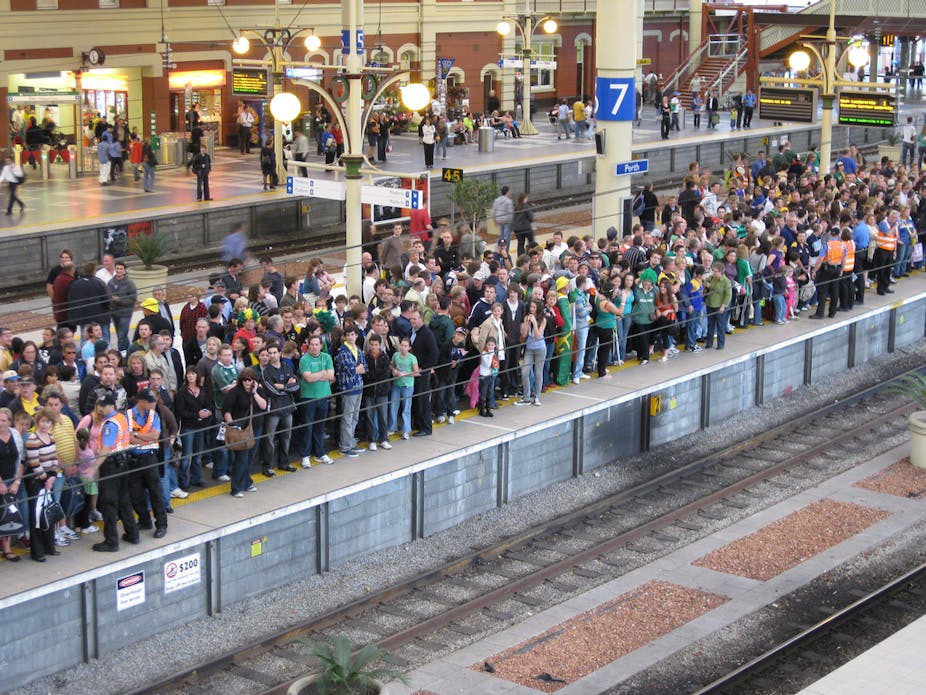Although Australia’s tax-to-GDP ratio is low by international standards, no-one wants to discuss how we might pay for the improvements needed to public transport, and even less the need for taxation to support better infrastructure and services.
Louis XIV’s Finance Minister, Jean Baptiste Colbert, had a good feel for taxation:
“The art of taxation consists in so plucking the goose as to obtain the largest possible amount of feathers with the smallest possible amount of hissing.”
In Australia we hear lots of hissing but don’t see many feathers when it comes to increased taxation to support better infrastructure and services.
There are three main sources of potential funding for improved transport services - government (on behalf of the community), users, and other beneficiaries (such as landowners).
The second and third of these funding sources are so-called “beneficiary pays” funding, and we could use such funding to improve transport in our cities, especially public transport.
The important issues to consider are revenue raising potential, predictability and stability of the revenue stream, the extent to which the measure affects travel behaviour, ease and flexibility of implementation, accountability and transparency.
The public also needs to accept the measures as equitable for different socio-economic groups. Alignment with strategic planning and development objectives, such as encouraging the scale, type and location of development conducive to achievement of more compact growth patterns and a strong CBD, should set the context.
Using these criteria, and following Colbert’s advice, the best result is likely to involve multiple measures. Looking at what is done in cities similar to our own in North America, I see considerable revenue raising potential in a number of areas - if our political leaders are prepared to put up with some hissing.
Fuel excise indexation
First, the federal government should push on with fuel excise indexation and give the additional revenue to the states, for transport spending. If we had not removed indexation over a decade ago, there would now be an additional A$5 billion available annually from this source.
The Productivity Commission found that current revenue from road users barely pays road infrastructure and maintenance costs, let alone covering the many other costs of road use, such as air pollution, congestion, accidents and carbon emissions. There is a strong case for increasing the fuel excise by more than indexation.
Road users benefit from better public transport. Many jurisdictions internationally – for example, Toronto - therefore spend some fuel tax revenue on public transport. Increasing fuel tax and giving the revenue to the states, with part to be spent on public transport, is economically defensible and would help to reduce the vertical fiscal imbalance between the federal government and states.
Car parking levies
Second, state governments should increase and extend their car parking levies. This charge sees road users pay for a small part of the congestion costs they cause in inner areas. The levy raises over A$100 million annually in Melbourne and Sydney, for example, and revenue could be substantially increased, by lifting the charge rate and extending the area that is included.
Payroll tax
Third, the states should marginally increase payroll tax levied on businesses located within 800 metres of high frequency tram, train or bus services. In Paris and Portland (Oregon) governments recognise the benefits employers get from access to high quality public transport services and levy them through payroll tax to help fund these services. NSW collects about A$7 billion and Victoria A$5 billion annually from payroll tax, so a small rate increase on beneficiaries would generate a significant sum towards better public transport.
Council levies
Fourth, the states should also impose a low rate metropolitan improvement levy on residential properties within 400 metres of a frequent public transport service. Councils could collect this with rate payments. New Halifax (Nova Scotia) has a very effective scheme of this sort. In turn, councils should be given a formal role, along with the state government, in determining public transport improvement priorities.
Property levies
Fifth, there should be project specific value capture charges for big public transport (and road) projects, like CBD rail, airport rail and light rail extensions, levied on properties close to the project, as Melbourne did 50 years ago for the Underground Rail Loop. London’s CrossRail project is a good current example.
Increased fares
Sixth, public transport fares could increase as services are improved, particularly on premium trunk services, but only if the other revenue measures are in place to reduce risks of patronage loss. These premium services tend to be used by higher income people, so equity arguments support looking at fare levels.
A likely objection to some of these proposals, particularly increasing fuel tax, is that they will adversely impact people with few transport options. This can be overcome by improving public transport service levels where these people live, particularly in those outer suburbs where services have lagged well behind population growth.
Now for the hissing.

